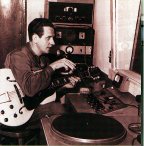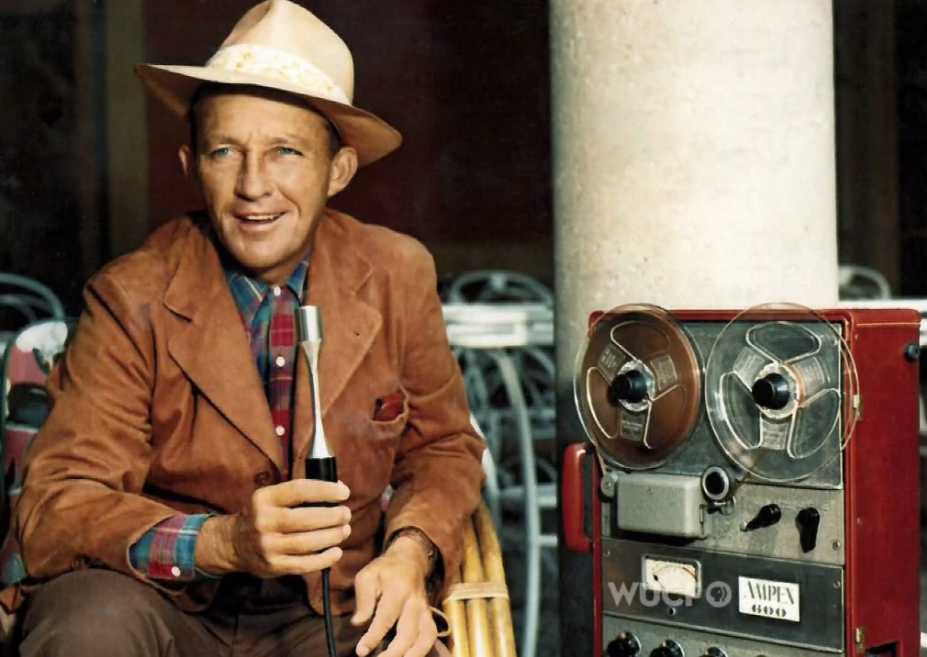

Les Paul: I'll tell you the story of how the tape recorder came to America.
I was working with Bing Crosby on the Kraft Music Hall in California and Bing says to me: "You know, I wish there was a way I could do like
you do. You have all your (transcription and wire recording
equipment) at home and you can record your stuff in your garage. I
have to go down to the studio and do everything. I can't play on the
golf course. I'd rather do it right at the club house if I could."

It just so happened that Judy Garland and I were doing a broadcast on Sundays in New York City. We had to fly from California to New York and it took 19 hours. We were playing at 53rd and Broadway and a little old man came up to me -- this was about 1945 or 46 -- and he said his name was Dick Ranger and he had a tape recording machine. He said he picked it up when we invaded Luxembourg in the big push to end the war.
This was big news to me. Colonial Ranger said he walked into a radio station and saw this tape machine and grabbed it. It was too big to carry or ship back so he dismantled it and brought it back to the States piece by piece. Colonel Ranger took this tape machine -- it was called a Magnetophon -- to Orange, New Jersey and put it back together. Then he made a copy of it he called the Rangertone.
Meanwhile, I go to Bing Crosby and tell him there's a man that nailed me at 53rd and Broadway with a tape machine. I said that's your guy. You can put that machine right on the golf course and you can record your show from there. Just get your trio to play behind you and there you go. So Bing says find the guy and bring him out here.
I called Colonel Ranger, brought him out to California, and he demonstrated the recorder at KNX, which is CBS out in Hollywood. Bing said I'll take 50 of them. But Ranger said he could only make one a year. This guy just wasn't a good businessman. Bing says I want someone who can make 50 of them and I need them now.
Well, there was another guy named Jack Mullin who also had one of the German recorders in his garage but he hadn't put it together yet. Finally, Mullin put his together and took it over to Ampex. The people at Ampex took a look and said let's go with it. But first, they said, they had to have some money...so they went to Bing for the cash. He said how much do you want? They said $50,000. Bing wrote out a check for fifty grand with no interest. He said I don't want any part of the Ampex company. I don't want anything to do with you guys other than have you deliver me those machines. And so it was that I worked on the very first broadcast with tape (Bing Crosby Philco Radio Time, 1947).
If one of the reels on that machine broke it could have killed five people in the room...it was going so fast. The tape that the Germans were using was made of paper. It was like fly paper. The Germans would just scratch some iron dust on it. Later 3M provided the first version of "Scotch" recording tape to replace that German paper stock. So that's how the tape machine got to America. It just floated up on our shores and Ampex made a fortune from it.

Let me say one more thing about tape, since I was there from the beginning. Anybody out there who thinks they've got something stored away on tape had better think twice because we don't know how long tape is going to last. It's almost like a (heart) bypass, unless someone stays around long enough to tell us we won't know how long it's going to work.
(Interviewer's Note: The EQ for Jack Mullin's re-designed circuitry
of the 1943 Magnetophon became the basis for the NAB curve. The first
pair of Ampex Model 200 tape recorders -- serial numbers 1 and 2 --
were delivered to Jack Mullin at the Bing Crosby show in Hollywood
in April, 1948 to replace Mullin's original Magnetophons, which
were being used to record the Crosby radio show.)